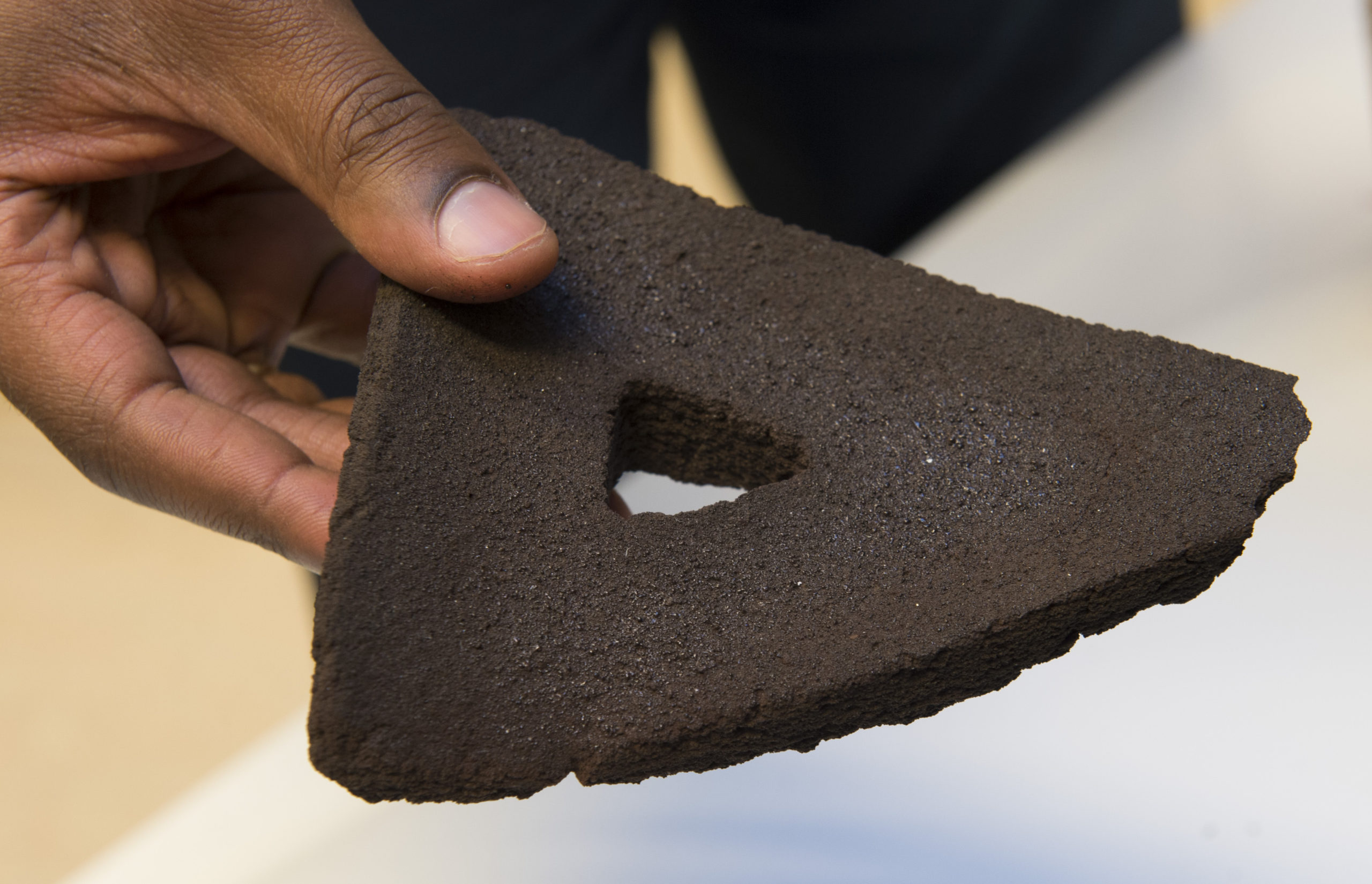Scientists with the European Space Agency have shown that it’s possible to make durable bricks using simulated Moon dust and concentrated sunlight. A similar approach may eventually allow lunar colonists to 3D-print their own habitats and structures using materials found on the Moon.
Multi-dome lunar base being constructed, based on the 3D printing concept. (Image: ESA/Foster + Partners)
If we’re going to colonise the moon — or any other celestial body, for that matter — we’re going to have a devise a cheap and easy way to manufacture materials on the spot. Just shipping stuff from Earth isn’t feasible, as the cost of lifting materials from our gravity well would be prohibitive, not to mention environmentally insensitive. To see if our planet’s satellite is already equipped with the basic building blocks for a construction project, the ESA’s General Support Technology Programme conducted a proof-of-concept study in which an oven and a blast of light was used to cook up some bricks.
The ESA scientists didn’t have access to copious amounts of actual Moon dust, so they recreated the finely-grained substance by grinding terrestrial volcanic material into a form that mimicked the real thing. Working at the DLR German Aerospace Center in Cologne, the researchers used two different setups — one involving natural sunlight and another using xenon lamps (the same kind found in cinema projectors). An array of 147 curved mirrors was used to focus the light into a high temperature beam.
“We took simulated lunar material and cooked it in a solar furnace,” explained ESA materials engineer Advenit Makaya in a statement. “This was done on a 3D printer table, to bake successive 0.1 mm layers of moondust at 1,000°C. We can complete a 20 x 10 x 3 cm brick for building in around five hours.”
Both light sources were used to manufacture bricks with the structural integrity of gypsum. The dark brown bricks are now set to undergo detailed mechanical testing to determine exactly how tough and durable they really are. Unfortunately, some bricks exhibited signs of warping along the edge, which happened because the centre took longer to cool down.
“We’re looking [into] how to manage this effect, perhaps by occasionally accelerating the printing speed so that less heat accumulates within the brick,” said Makaya. “But for now this project is a proof of concept, showing that such a lunar construction method is indeed feasible.”

Brick 3D printed from moondust using focused sunlight (ESA-G.Porter)
This demonstration transpired in standard atmospheric conditions, but a follow-up study, called the RegoLight project, will attempt to produce the bricks in conditions that better approximate those found on the Moon, namely a vacuum environment at high temperatures.
Finding ways to build stuff off-planet is obviously a good idea, and certainly something to consider for not just the Moon, but Mars as well. To that end, researchers from the University of California at San Diego recently made bricks from simulated Martian soil that were as strong, if not stronger, than concrete. With each passing breakthrough, we’re getting closer to the day when we really can get off this rock.
[ESA]
